Biography
Personal life and education
Singer was born in London in 1846 to a Hungarian father and English mother. At age 8 (1855) his mother took him to visit Raab, Hungary. She believed he would get a better education there, but shortly after their arrival she contracted cholera and died within 24 hours. Simeon remained there a few months with family members, and then returned to London. He "possessed an exceptional mind", and at the age of 13 he was the recipient of the Barnett Myers Scholarship, allowing him to study.
He became a student at the Day School of Jews' College, which had only recently been founded in 1855. The curriculum of the school was wide and in addition to Biblical Hebrew, included English, French, German, as well as Mathematics and Science. Singer thus spoke German and French fluently, and some Italian, acquired a working knowledge of Latin and Greek, and was generally well-educated in the arts and sciences.
He later moved into the College itself, when he decided to enter the Ministry. His studies there were interrupted by the death of its principal, the Rev Barnett Abrahams. Singer was then fortunate to be taught by the new principal, Dr Michael Friedländer, who "took a kindly interest in young Singer". In 1867, whilst still a student, he became part-time minister, and combined this with teaching at the Day School, where he was for a time headmaster. He remained at Jews' College for 12 more years.
In 1890 he received his Semicha (the Rabbinical Diploma) from Rabbi Isaac Hirsch Weiss of Vienna, author of Dor Dor v'Dor'shav. He underwent a series of written and oral examinations, spending two months there "being rigorously examined". Singer had begun rabbinical studies with Dayan Jacob Reinowitz of the London Beth Din in 1879, eventually following a "demanding three-year course of study" with Weiss; he visited the Continent often and spent much time either with Weiss, or studying by himself under Weiss' guidance.
On returning to England, Singer did not demand that his title be changed to "Rabbi", and he continued to be called "Reverend". Relatedly, "he evidenced his self-denial" by declining to stand for the post of associate Chief Rabbi following the death of Chief Rabbi Adler.
He married Charlotte Pyke in 1867. They had six children: Jules, Samuel, David, Richard, Charles and Freda. His son was the historian Charles Singer; Israel Abrahams was his son-in-law.
Career
In 1867, at age 21, he became minister of the Borough Synagogue in Walworth, London (now closed; amalgamated with Brixton Synagogue, 1961). As above, during this time he taught at Jews' College School full-time, and was, for a time, its headmaster. He moved to the New West End Synagogue in 1878, and remained the minister there until his death. As a preacher "Singer showed rare gifts". His pulpit addresses in general won wide appreciation, and his services were often called for at public functions. He was the first to introduce regular sermons to children. "Despite his devotion to public work", Singer published some important works; see below
He was "a power in the community in the direction of moderate progress"; he was "a lover of tradition, yet at the same time he recognized the necessity of well-considered changes". In 1892 at his instigation the first English Conference of Jewish Preachers was held, and some reforms were then and at other times introduced, such as the introduction of Bible Readings in English, the admission of women as choristers and the inclusion of the express consent of the bride as well as the bridegroom at the marriage ceremony. He did much to reunite Conservatives and Liberals in the community, and he himself preached at the Reform Synagogue in Manchester.
He had no love for the minute critical analysis of the Bible, but he was attracted to the theory of progressive revelation, and thus was favourably disposed to the modern treatment of the Old Testament. His "cheery optimism was at the basis of this attitude", and strongly coloured his belief in the Messianic ideals. He "held aloof... from all Zionist schemes", believing in the restoration of Israel to the Promised Land but nonetheless having doubts about political Zionism. His interest in the fortunes of foreign Jews led him to make several continental journeys on their behalf; he was one of the leading spirits of the Russo-Jewish Committee, of the Jewish Association for the Protection of Girls and Women and of other philanthropic organisations.
Works
Singer's most famous work was his new edition and English translation of the Authorized Daily Prayer Book (published in 1890), a work which has gone through many large editions and which has probably been the most popular (both with Jews and Christians) of any book published by an English Jew. The Hebrew text was that of Seligman Baer's classic Avodat Yisrael, to which Singer provided an "authorised" version of the liturgy capable of standardising and stabilising the synagogue service and helping to create an "established" Judaism in Britain and the Commonwealth (the so-called "Minhag Anglia".)
The Siddur was expanded in 1917 under Chief Rabbi Joseph Hertz; 1934 saw a "continuous" version, minimising the need for cross-reference, and which also incorporated additional material. The 1962 Second Edition, under Chief Rabbi Israel Brodie, was completely re-typeset; also the translation was amended where it had become unclear or archaic, and further additional material had been introduced. The Centenary Edition of 1990 saw an extensively revised translation by Rabbi Eli Cashdan, and also included a series of explanatory notes by Chief Rabbi Lord Jakobovits. In 2006, Chief Rabbi Jonathan Sacks penned a new translation, with commentary, instructions, laws & rubrics; this Fourth Edition formed the basis for the Koren Sacks Siddur published 2009.
This Siddur – in its various editions – has remained the standard prayer book for most orthodox Jews in Great Britain, and for many in the Commonwealth, and is still informally known as the "Singer's Siddur." In 1915 the Bloch Publishing Company published an American version, The Standard Prayer Book, which was widely used until the introduction of Philip Birnbaum's Ha-Siddur Ha-Shalem in 1949.
In 1896 the Cambridge University Press published Talmudical Fragments in the Bodleian Library of which Singer was joint author with Solomon Schechter.
Israel Abrahams had access to all of his manuscripts and, after Singer's death, produced three volumes of his literary remains (1908). In 1914, Abrahams also published an annotated edition of Singer's Siddur, with "Historical and Explanatory Notes".

A siddur is a Jewish prayer book containing a set order of daily prayers. The word siddur comes from the Hebrew root ס־ד־ר, meaning 'order.'

Rabbinic literature, in its broadest sense, is the entire spectrum of works authored by rabbis throughout Jewish history. The term typically refers to literature from the Talmudic era, as opposed to medieval and modern rabbinic writings. It aligns with the Hebrew term Sifrut Chazal, which translates to “literature [of our] sages” and generally pertains only to the sages (Chazal) from the Talmudic period. This more specific sense of "Rabbinic literature"—referring to the Talmud, Midrashim, and related writings, but hardly ever to later texts—is how the term is generally intended when used in contemporary academic writing. The terms mefareshim and parshanim almost always refer to later, post-Talmudic writers of rabbinic glosses on Biblical and Talmudic texts.
Aleinu or Aleinu leshabei'ach, meaning "it is upon us" or "it is our obligation or duty" to "praise God," is a Jewish prayer found in the siddur, the classical Jewish prayerbook. It is recited in most communities at the end of each of the three daily Jewish services and in the middle of the Rosh Hashanah mussaf. It is also recited in many communities following Kiddush levana and after a circumcision is performed. It is second only to the Kaddish as the most frequently recited prayer in current synagogue liturgy.
Kol Nidre is a Hebrew and Aramaic declaration which is recited in the synagogue before the beginning of the evening service on the eve of Yom Kippur. Strictly speaking, it is not a prayer, even though it is commonly spoken of as if it were a prayer. This declaration and its ceremonial accompaniment have been charged with emotional undertones since the medieval period, creating a dramatic introduction to Yom Kippur on what is often dubbed "Kol Nidrei night", with the entire Yom Kippur evening service popularly called Kol Nidrei.

The machzor is the prayer book which is used by Jews on the High Holy Days of Rosh Hashanah and Yom Kippur. Many Jews also make use of specialized machzorim on the three pilgrimage festivals of Passover, Shavuot, and Sukkot. The machzor is a specialized form of the siddur, which is generally intended for use in weekday and Shabbat services.
Lekha Dodi is a Hebrew-language Jewish liturgical song recited Friday at dusk, usually at sundown, in synagogue to welcome the Sabbath prior to the evening services. It is part of Kabbalat Shabbat.

Adon Olam is a hymn in the Jewish liturgy. It has been a regular part of the daily and Shabbat (Sabbath) liturgy since the 15th century.

Isaac Leeser was an American Orthodox Jewish religious leader, teacher, scholar and publisher. He helped found the Jewish press of America, produced the first Jewish translation of the Bible into English, and helped organize various social and educational organizations. He is considered one of the most important nineteenth century American Jewish personalities. He was "fiercely opposed" to Reform Judaism and was regarded as one of the most important "orthodox" rabbis of his era. Leeser is regarded as a forerunner by both Modern Orthodox Judaism and Conservative Judaism.
Yedid Nefesh is the title of a piyyut and zemer. It is usually sung on Shabbat.
Philip Birnbaum was an American religious author and translator. He is best known for his work Ha-Siddur ha-Shalem, a translation and annotation of the Siddur first published in 1949.
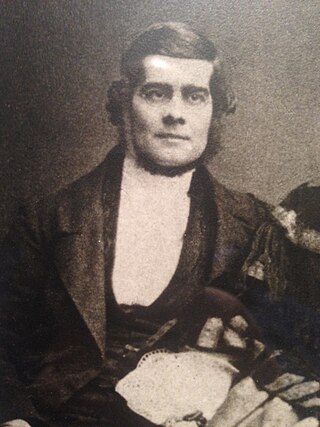
Abraham Pereira Mendes was a Jamaican rabbi and educator. He served in Jamaica, England, and the USA.
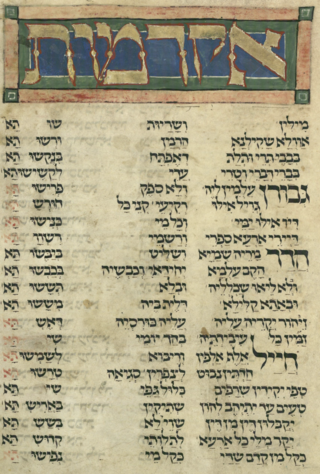
Akdamut, or Akdamus or Akdamut Milin, or Akdomus Milin, is a prominent piyyut written in Aramaic recited annually on the Jewish holiday of Shavuot by Ashkenazi Jews. It was penned by Rabbi Meir bar Yitzchak of Orléans, who was a cantor in Worms, Germany,. Akdamut consists of praise for God, His Torah, and His people.
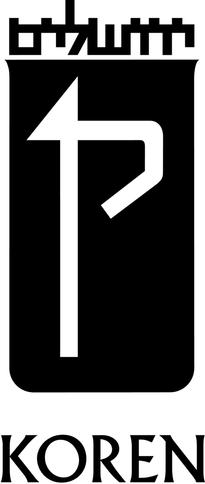
Koren Publishers Jerusalem is an Israeli publisher of Jewish religious texts. It was established in 1961 by Eliyahu Koren, with the aim of publishing the first Hebrew Bible designed, edited, printed, and bound by Jews in nearly 500 years. It produced The Koren Bible in 1962, The Koren Siddur in 1981, and the Koren Sacks Siddur in 2009, in addition to numerous editions of these books and other religious texts in Hebrew, English, and other languages.
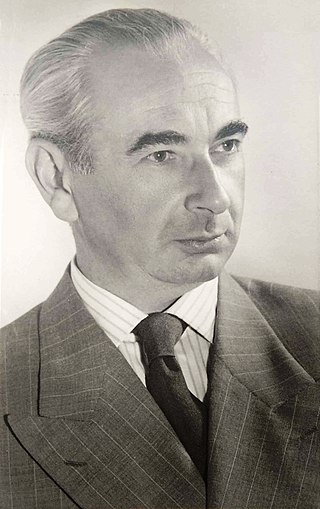
Eliyahu Koren was a master typographer and graphic artist. After studying in Nuremberg, he immigrated to Mandatory Palestine in 1933. He served as head of the graphics department of Keren Kayemet, the Jewish National Fund, from 1936 to 1957. He founded Koren Publishers Jerusalem in 1961, which published the Koren Bible in 1962. He published the Koren Siddur in 1981, and various religious texts until his death.
The Koren Siddur refers to a family of siddurim published by Koren Publishers Jerusalem beginning in 1981.
Baruch HaShem Le'Olam is a compilation of 18 verses from Tanach that is recited by some minyanim during weekday Maariv between Shema and Amidah. Its name is from the first 3 words of the first verse.

Eli Cashdan 1 June 1905 – 14 November 1998) was a rabbi in the UK. He was a chaplain in the Royal Air Force during World War II, a senior lecturer at Jews' College and wrote a number of important books of Jewish interest.
Rabbi Moses Berlin (1852–1927) was a prominent British Reform Jewish rabbi.

Fanny Neuda was a German-language Jewish writer best known for her popular collection of prayers, Stunden der Andacht (1855).
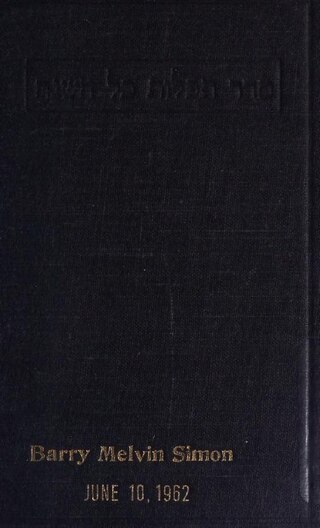
The Authorised Daily Prayer Book was an English translation of the Hebrew siddur created by Rabbi Simeon Singer. First published in 1890, it has gone through many editions, and is still used in many British Orthodox synagogues and homes.












